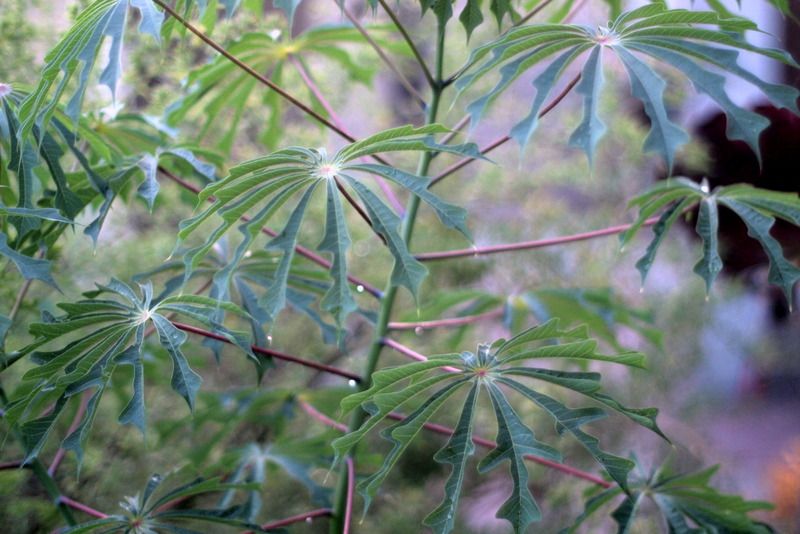A garden can be a stay-at-home option to ecotourism, where the plants pack their seedy suitcases and travel to us. (If growing any exotic, non-native plant sets your teeth on edge, those categories may be blurring faster than we’d like: “A new study from the University of Exeter and Oxford University finds that plant pests and diseases have been migrating northward and southward an average of two miles a year since 1960. This suggests that the plants on which they prey have been moving at similar rates.” – “Hey, You Calling Me An Invasive Species?” Tne New York Times 9/7/13.)
I’d wager there’s probably a civilization-defining plant in every garden. Acanthus, rice paper plant, papyrus, flax. All movers and shakers in human history. Take the manihots, which some of us might have sampled as kids as a sweet, sticky pudding. (It’s the tropical with that easy-to remember name, man, it’s hot). Tapioca pudding, as I remember it, looks an awful lot like what they ate for breakfast in The Matrix. The pudding comes from the tropical tapioca, Manihot esculenta. Not to be mistaken for sago pudding, made from sago palms (as if I knew that before writing this post). Tapioca is a gluten-free starch, a staple in many tropical countries, known by various names like manioc, cassava. The noble lineage of plants in their countries of origin is often uncovered only after we’ve capriciously selected them for their pretty leaves or flowers. They’re like little icebergs bobbing in our gardens, so much of their identity submerged beneath the surface.

This is not the tapioca-making Manihot esculenta, but the so-called hardy tapioca, Manihot grahamii, zoned 7 to 10, from Brazil. For a tropical, it doesn’t mind life on the dryish side either. Its ambition is to become a small, somewhat gangly tree, sprouting those beautiful leaves in a tuft at the top. But now I can confirm that when cut back mid-summer, it will send shoots from the base, which allows for a much nicer view of those spectacular leaves and red stems. Just as gardens in colder zones than mine do, I’ve been growing mine in a large pot for several years.

I love tapioca! In some brazilian states people have for breakfast a pancake made of tapioca and its delicious! They can be sweet or salty and they are completly white and really thin. Its hard to explain, but trust me on this, its really good! We havd tapioca trees planted at home, but its another variety.
Marina, I knew there must be more to tapioca than just pudding! Sounds delicious.